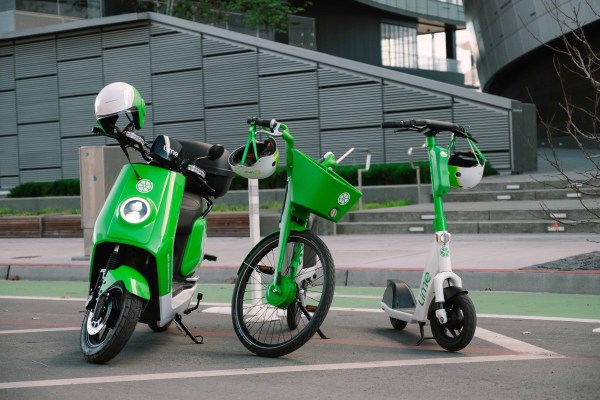Shared micromobility operator Lime is on track for third quarter adjusted EBITDA profitability, marking this as the second profitable quarter in the company’s history, according to CEO Wayne Ting. During the Wall Street Journal Tech Live event, Ting said COVID has turned from a “headwind into a tailwind,” heralding more prosperous times in the year to come.
Sound familiar?
Around this time last year, at the WSJ Future of Everything event, Ting also boasted of the company’s movement beyond the financial hardships of the pandemic and toward Q3 profitability. Lime said it was operating both cash flow positive and free cash flow positive, with expectations to be full-year profitable in 2021. Unfortunately, COVID got in the way again.
“The delta variant led to additional lockdowns and delays of cities opening up around the world, which impacted projected top-line revenue,” Russell Murphy, senior director of corporate communications at Lime, told TechCrunch. “Even without tourism and commuting returning to pre-COVID levels, we’re glad that demand has returned and we’re anticipating a continued surge in ridership in 2022.”
Ting said bottom-line growth is what made a difference this year. Q3’s top line was about the same as the same quarter in 2019, give or take 1% to 2%, and that was not a profitable quarter. This means that although Lime was not able to generate more sales and revenue, it was able to spend its money and manage its operating costs far more efficiently.
Adjusted EBITDA is a non-GAAP accounting measure that many startups use to give a more comparable picture of their financial performance. Factors like stock-based compensation for employees are often removed from adjusted EBITDA, which can make it all but impossible to truly understand a company’s cash flow position without an official SEC filing. Ting did not mention cash-flow positivity during the event.
Over the past year, Lime has done things like deploy its Gen4 scooters with swappable batteries, which can certainly help streamline charging processes. Better-quality scooters and bikes that last longer also remove some of the significant costs of vehicle depreciation while bolstering unit economics. The company said it was also able to drive operational efficiencies with learnings from running a large, global micromobility fleet, but didn’t provide specifics.
“The business is coming back even though some of our biggest use cases are still not back, so commute is not back, tourism is not back,” said Ting. “What we’ve actually seen is we dramatically grew what we call ‘intercity travel.’ People are using us versus alternatives because we are open-air, single passenger, because people want a greener way to move around. And when I look forward to 2022, commute is going to come back to some extent, tourism is going to come back. We just announced opening travel from Europe, and all those are going to be tailwinds going into next year.”
Lime is also relying on shifting consumer sentiments to grow revenues, particularly around younger generations and climate change.
“The number one source for carbon pollution in the United States is transportation,” said Ting. “If we want to fundamentally solve carbon from transportation we have to look at lighter weight alternatives like scooters and bikes, and we have to invest in public transportation. When you talk to young people, this is deeply felt by them and they’re changing their behavior to meet this moment.”
This story is ongoing. Please check back in for updates.
